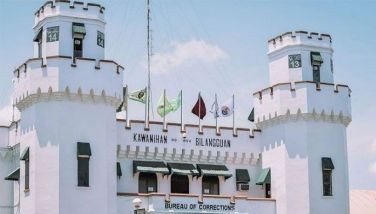Was Magellan’s slave, a Malay, globe’s first circumnavigator?

Ferdinand Magellan willed the freedom of his Malay slave Enrique upon his death. But his brother-in-law Duarte Barbosa negated the release, insisting that Enrique continue to serve Magellan’s wife, Barbosa’s sister, as inheritance.
Enrique was morose. He faithfully had assisted his master in several Europe land battles, then in crossing two vast oceans for a new route to the Spice Islands. On their anchoring at Homonhon on March 16, 1521, it was his knowledge of the local language that brought them timely nourishment from the natives. He had advised against fighting the Mactan chieftain Lapulapu. Since Magellan was killed in that clash of April 27, he must be emancipated as stated in the last testament. Yet Barbosa, newly elected co-commander of the expedition, decreed otherwise.
Enrique had no option left. On April 28 five hundred years ago today, he jumped the flagship Victoria.
That much was documented by Genoese pilot Gines de Mafra, Venetian historian Antonio Pigafetta and the expedition’s last captain-general, Sebastian Elcano. Subsequent first-hand accounts and interpretations are contested.
Did Enrique participate in the massacre of Barbosa and crew on May 1, 1521? Rajah Humabon had invited Magellan’s officers to a banquet in Cebu. It was a trap. The guests were attacked while they were feasting. The ambushers captured Barbosa’s co-commander João Serrão, Magellan’s buddy, and held him for ransom. Survivors interviewed by Maximilianus Transylvanus on their return to Spain recounted that Serrão’s maltreatment of Enrique incited the plot. Pigafetta, who did not attend the banquet, pinned the blame on both Barbosa and Serrão.
Was Enrique a Visayan like Humabon? Filipino biographer-historian Carlos Quirino so deduced from their ease of communication. The rajah supposedly knew Enrique’s clan and thus aided him. Magellan had bought him ten years earlier in a slave market in Malacca, now part of Malaysia. Enrique happened to be in that Malay trade center during the Portuguese siege of 1511, Quirino theorized.
Enrique was first to circumnavigate the world, Quirino wrote in Philippines Free Press, 1991. Magellan had brought him to Portugal via the old route of the Indian Ocean and Cape of Good Hope. Joining Magellan’s voyage from Spain in 1519 through the Atlantic and Pacific Oceans, Enrique completed the round trip on reaching Cebu in 1521.
Malaysian scholar Mohamed Arof Ishak differed from Quirino’s Visayan theory. Enrique was either Malacca- or Sumatra-born, and spoke the Malay lingua franca, he gleaned from Gines and Pigafetta. On escaping from the Victoria, Enrique found his way back to his isle 2,000 kilometers away. In that homecoming Ishak agreed with Quirino: Enrique, a Malay, was first to circle the globe doorstep to doorstep.
Enrique’s real name is unknown. He has been depicted in novels and films as a “panglima” or nobleman. Supposedly only 17 years old, he was sold as a captive in the Battle of Malacca. The Portuguese soldier Magellan bought him as a souvenir of his adventure in East Asia in 1509-1511. He was christened Henrique, later Hispanized to Enrique.
“If Enrique escaped in Cebu, how was he able to find his way and return to Malacca? Historical records are silent on this matter,” said Prof. Augusto de Viana, PhD, in “Stories Rarely Told, Vol. II.”
“Peninsular Malays called him Panglima Awang,” de Viana noted. “The title panglima among the Tausug indicates he was a person of high rank... a judge or a governor... a member of the high council in the court of a sultan.”
Magellan made Enrique his arquebus carrier and bodyguard in the wars against the North African Moors. Teaching him Portuguese, Spanish and French, Magellan found Enrique useful in the “Byzantine Renaissance court politics in Lisbon and Madrid,” Carmen Guerrero Nakpil wrote in “Heroes and Villains.”
If Enrique truly was Cebuano, Guerrero Nakpil chuckled, then he must have been the first overseas Filipino worker. Also the first balikbayan, or native returnee. “We are left to guess what he shouted to the men on the beach. Was it, ‘Hoy! Kayo diyan! Nakabalik na rin ako!’?” Guerrero Nakpil wondered. “We can be sure Enrique died happy among his own folk, although he never knew of the fame he had acquired in European and world history.”
* * *
“Gotcha: An Exposé on the Philippine Government” is available as e-book and paperback. Get a free copy of “Chapter 1: Beijing’s Bullying and Duplicity.” Simply subscribe to my newsletter at: https://jariusbondoc.com/#subscribe. Book orders also accepted there.
- Latest
- Trending





























